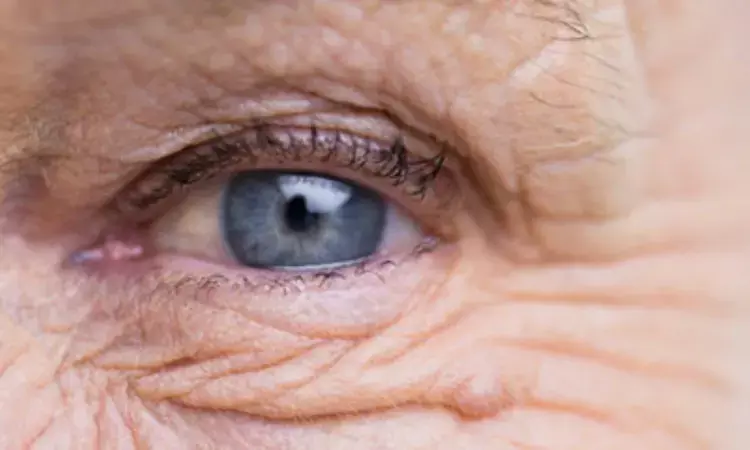- Home
- Medical news & Guidelines
- Anesthesiology
- Cardiology and CTVS
- Critical Care
- Dentistry
- Dermatology
- Diabetes and Endocrinology
- ENT
- Gastroenterology
- Medicine
- Nephrology
- Neurology
- Obstretics-Gynaecology
- Oncology
- Ophthalmology
- Orthopaedics
- Pediatrics-Neonatology
- Psychiatry
- Pulmonology
- Radiology
- Surgery
- Urology
- Laboratory Medicine
- Diet
- Nursing
- Paramedical
- Physiotherapy
- Health news
- Fact Check
- Bone Health Fact Check
- Brain Health Fact Check
- Cancer Related Fact Check
- Child Care Fact Check
- Dental and oral health fact check
- Diabetes and metabolic health fact check
- Diet and Nutrition Fact Check
- Eye and ENT Care Fact Check
- Fitness fact check
- Gut health fact check
- Heart health fact check
- Kidney health fact check
- Medical education fact check
- Men's health fact check
- Respiratory fact check
- Skin and hair care fact check
- Vaccine and Immunization fact check
- Women's health fact check
- AYUSH
- State News
- Andaman and Nicobar Islands
- Andhra Pradesh
- Arunachal Pradesh
- Assam
- Bihar
- Chandigarh
- Chattisgarh
- Dadra and Nagar Haveli
- Daman and Diu
- Delhi
- Goa
- Gujarat
- Haryana
- Himachal Pradesh
- Jammu & Kashmir
- Jharkhand
- Karnataka
- Kerala
- Ladakh
- Lakshadweep
- Madhya Pradesh
- Maharashtra
- Manipur
- Meghalaya
- Mizoram
- Nagaland
- Odisha
- Puducherry
- Punjab
- Rajasthan
- Sikkim
- Tamil Nadu
- Telangana
- Tripura
- Uttar Pradesh
- Uttrakhand
- West Bengal
- Medical Education
- Industry
Oral antioxidants may delay geographic atrophy in AMD patients, finds study

A new study published in the journal of Ophthalmology suggests that supplementing with oral micronutrients reduced the development of geographic atrophy (GA) into the central macula, most likely by enhancing the innate foveal sparing effect. The only authorized therapies for age-related macular degeneration (AMD) that reduce the course of geographic atrophy are expensive and have significant risks with requirement for repeated intraocular injections. Thus, Tiarnan Keenan and colleagues wanted to find out if oral supplements can reduce the advancement of GA in AMD.
The Age-Related Eye Diseases Study (AREDS) and AREDS2 were multi-center randomized controlled trials with a 2x2 factorial design and placebo control which underwent post hoc analysis. In AREDS, 392 eyes (318 participants) had GA, but in AREDS2, 1210 eyes (891 participants) had GA. The oral antioxidants (400 IU vitamin E, 500 mg vitamin C, 15 mg β-carotene), 80 mg zinc, combination, or placebo were given at random to AREDS participants. The participants of AREDS2 were randomized to receive a placebo, 350 mg of docosahexaenoic acid/650 mg of eicosapentaenoic acid, 10 mg of lutein/2 mg of zeaxanthin, or a combination. The consented participants in AREDS2 were additionally randomized to one of three alternative AREDS formulations being, original, without beta-carotene, with 25 mg of zinc instead of 80 mg, or both.
The primary findings of this investigation were changes in GA area square root and closeness to the central macula over time. These changes were assessed using color fundus photos taken during yearly visits and were subjected to mixed-model regression analysis based on randomized assignments.
The key findings of this study found that proximity-based advancement towards the central macula in AREDS eyes with non-central GA (n=208) was considerably slower when antioxidants were randomly assigned against none, at 50.7 μm/year versus 72.9 μm/year, respectively. With respect to lutein/zeaxanthin versus none, proximity-based advancement was considerably slower in AREDS2 eyes with non-central GA in participants randomized to AREDS antioxidants without β-carotene at 80.1 μm/year against 114.4 μm/year, respectively.
Area-based advancement in AREDS eyes with any GA did not vary substantially when antioxidants were randomly assigned against none (p=0.63). Randomization to lutein/zeaxanthin versus none did not substantially alter the area-based progression in AREDS2 eyes with any GA in subjects allocated to AREDS antioxidants without β-carotene. Overall, this study clearly shows the efficacy of the oral-micronutrients supplementation against the central macula progression.
Source:
Keenan, T. D. L., Agrón, E., Keane, P. A., Domalpally, A., & Chew, E. Y. (2024). Oral Antioxidant and Lutein/Zeaxanthin Supplements Slow Geographic Atrophy Progression to the Fovea in Age-Related Macular Degeneration. In Ophthalmology. Elsevier BV. https://doi.org/10.1016/j.ophtha.2024.07.014
Neuroscience Masters graduate
Jacinthlyn Sylvia, a Neuroscience Master's graduate from Chennai has worked extensively in deciphering the neurobiology of cognition and motor control in aging. She also has spread-out exposure to Neurosurgery from her Bachelor’s. She is currently involved in active Neuro-Oncology research. She is an upcoming neuroscientist with a fiery passion for writing. Her news cover at Medical Dialogues feature recent discoveries and updates from the healthcare and biomedical research fields. She can be reached at editorial@medicaldialogues.in
Dr Kamal Kant Kohli-MBBS, DTCD- a chest specialist with more than 30 years of practice and a flair for writing clinical articles, Dr Kamal Kant Kohli joined Medical Dialogues as a Chief Editor of Medical News. Besides writing articles, as an editor, he proofreads and verifies all the medical content published on Medical Dialogues including those coming from journals, studies,medical conferences,guidelines etc. Email: drkohli@medicaldialogues.in. Contact no. 011-43720751


